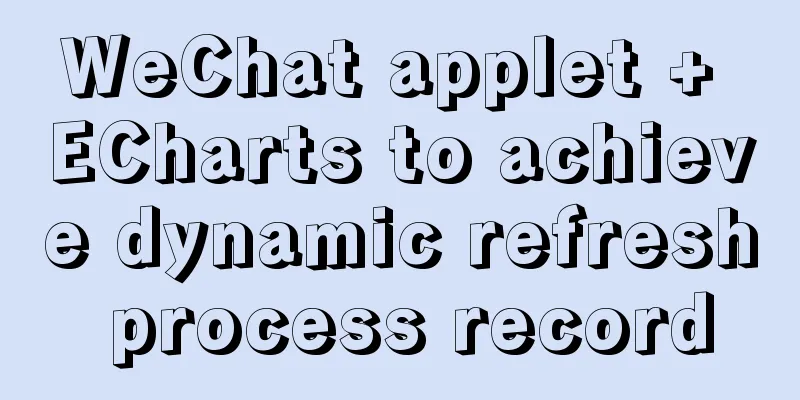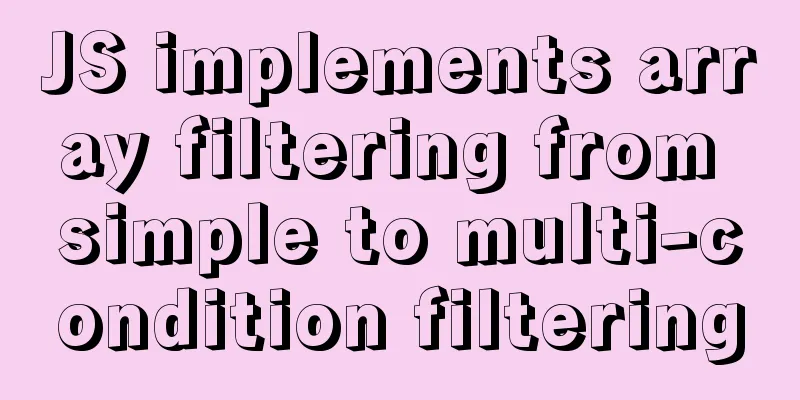Element Plus implements Affix

1. Component Introduction Affix components are used to fix page elements in a specific visual area. 1.1 Properties
1.2 Events
2. Source Code Analysis 2.1 template
<template>
<div ref="root" class="el-affix" :style="rootStyle">
<div :class="{'el-affix--fixed': state.fixed}" :style="affixStyle">
<slot></slot>
</div>
</div>
</template>
The template part is very simple, receiving content through slot 2.2 script
// Some core codes, the code order is adjusted setup(props, { emit }) {
// target container ref
const target = ref(null)
// Fix ref, and cooperate with the ref attribute in template to get the HTML element const root = ref(null)
// Scroll container ref
const scrollContainer = ref(null)
// Fixed state const state = reactive({
fixed: false,
height: 0, // height of root
width: 0, // width of root
scrollTop: 0, // scrollTop of documentElement
clientHeight: 0, // clientHeight of documentElement
transform: 0,
})
onMounted(() => {
// Determine the target container based on the incoming target if (props.target) {
target.value = document.querySelector(props.target)
if (!target.value) {
throw new Error(`target is not existed: ${props.target}`)
}
} else {
target.value = document.documentElement
}
// According to the fixed element, find the scroll container upwards scrollContainer.value = getScrollContainer(root.value)
// Listen for the scroll event of the scroll container on(scrollContainer.value, 'scroll', onScroll)
// Listen for the resize event of the fixed element addResizeListener(root.value, updateState)
})
// The response function of the scroll container's scroll event const onScroll = () => {
// Update the fixed state updateState()
emit('scroll', {
scrollTop: state.scrollTop,
fixed: state.fixed,
})
}
// Update the fixed state function const updateState = () => {
const rootRect = root.value.getBoundingClientRect()
const targetRect = target.value.getBoundingClientRect()
state.height = rootRect.height
state.width = rootRect.width
state.scrollTop = scrollContainer.value === window ? document.documentElement.scrollTop : scrollContainer.value.scrollTop
state.clientHeight = document.documentElement.clientHeight
if (props.position === 'top') {
if (props.target) {
const difference = targetRect.bottom - props.offset - state.height
// targetRect.bottom > 0 means that the fixed pin is always kept in the container and hidden if it exceeds the range state.fixed = props.offset > rootRect.top && targetRect.bottom > 0
// Used to handle the scenario: During the scrolling process, if the visible area of the target container is not enough to display the entire pin, the pin should be offset accordingly to display only part of it state.transform = difference < 0 ? difference : 0
} else {
state.fixed = props.offset > rootRect.top
}
} else {
if (props.target) {
const difference = state.clientHeight - targetRect.top - props.offset - state.height
state.fixed = state.clientHeight - props.offset < rootRect.bottom && state.clientHeight > targetRect.top
state.transform = difference < 0 ? -difference : 0
} else {
state.fixed = state.clientHeight - props.offset < rootRect.bottom
}
}
}
// Monitor the fixed state change and emit change events watch(() => state.fixed, () => {
emit('change', state.fixed)
})
// Calculate the property and automatically update the style of the nail according to the state of the nail const affixStyle = computed(() => {
if (!state.fixed) {
return
}
const offset = props.offset ? `${props.offset}px` : 0
const transform = state.transform ? `translateY(${state.transform}px)` : ''
return {
height: `${state.height}px`,
width: `${state.width}px`,
top: props.position === 'top' ? offset : '',
bottom: props.position === 'bottom' ? offset : '',
transform: transform,
zIndex: props.zIndex,
}
})
}2.3 Implementation summary:
This is the end of this article about Element Plus’ implementation of Affix pinning. For more relevant Element Affix pinning content, please search 123WORDPRESS.COM’s previous articles or continue to browse the following related articles. I hope everyone will support 123WORDPRESS.COM in the future! You may also be interested in:
|
<<: A collection of possible problems when migrating sqlite3 to mysql
>>: VMware and CentOS system installation method to reset the root password
Recommend
The viewport in the meta tag controls the device screen css
Copy code The code is as follows: <meta name=&...
The difference and usage of Vue2 and Vue3 brother component communication bus
Table of contents vue2.x vue3.x tiny-emitter plug...
Detailed explanation of the principle of Docker image layering
Base image The base image has two meanings: Does ...
How to quickly install nginx under Windows and configure it to start automatically
Table of contents 1. Nginx installation and start...
HTML realizes real-time monitoring function of Hikvision camera
Recently the company has arranged to do some CCFA...
How to use webSocket to update real-time weather in Vue
Table of contents Preface About webSocket operati...
React realizes secondary linkage (left and right linkage)
This article shares the specific code of React to...
Docker nginx example method to deploy multiple projects
Prerequisites 1. Docker has been installed on the...
Detailed explanation of VueRouter routing
Table of contents vue router 1. Understand the co...
Solution to the problem that docker logs cannot be retrieved
When checking the service daily, when I went to l...
MySQL foreign key constraint disable and enable commands
Disabling and enabling MySQL foreign key constrai...
Solve the problem of qt.qpa.plugin: Could not load the Qt platform plugin "xcb" in Qt under Ubuntu 18.04
Problem Description After installing Qt5.15.0, an...
Common array operations in JavaScript
Table of contents 1. concat() 2. join() 3. push()...
Linux CentOS6.9 installation graphic tutorial under VMware
As a technical novice, I am recording the process...
Implementing a simple age calculator based on HTML+JS
Table of contents Preface Demonstration effect HT...









